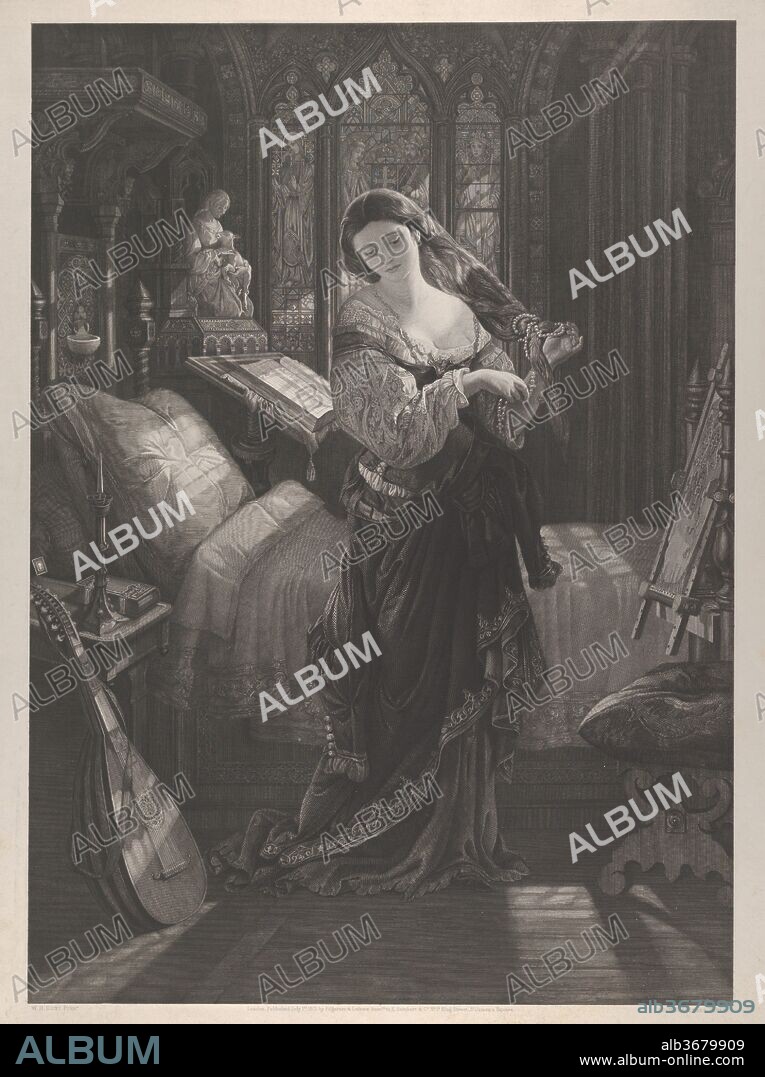alb3679909
AFTER DANIEL MACLISE. Madeline after Prayer (from John Keats, The Eve of St. Agnes, stanza XIX, lines 4-5)

|
Ajouter à une autre Lightbox |
|
Ajouter à une autre Lightbox |



Avez-vous déjà un compte? S'identifier
Vous n'avez pas de compte ? S'inscrire
Acheter cette image

Auteur:
Titre:
Madeline after Prayer (from John Keats, The Eve of St. Agnes, stanza XIX, lines 4-5)
Légende:
Voir la traduction automatique
Madeline after Prayer (from John Keats, The Eve of St. Agnes, stanza XIX, lines 4-5). Artist: After Daniel Maclise (Irish, Cork 1806-1870 London). Dimensions: Image: 24 3/16 × 17 3/8 in. (61.5 × 44.1 cm)
Sheet: 28 3/16 × 20 7/8 in. (71.6 × 53 cm). Engraver: Auguste-Thomas-Marie Blanchard (French, Paris 1819-1898 Paris). Publisher: Pilgeram & Lefèvre (London). Date: July 1, 1871.
An accomplished painter of history and drama, Maclise came close to the Pre-Raphaelites late in his career, when he painted Madeline after Prayer (1868; Guildhall Art Gallery, London), inspired by John Keats's The Eve of St. Agnes. Madeline is preparing for bed, hoping to dream of a future husband. Blanchard's etching contrasts the maiden's moonlit beauty with the deeply shadowed room. The poem tells us that she is
watched by a hidden suitor:
Porphyro grew faint:
She knelt, so pure a thing, so free from mortal
taint.
Anon, his heart revives: her vespers done,
Of all its wreathed pearls her hair she frees;
Unclasps her warmed jewels one by one;
Loosens her fragrant bodice; by degrees
Her rich attire creeps rustling to her knees. . . .
The detailed setting and our proximity to the main figure distinguish the conception from John Everett Millais's 1863 version of the subject.
Technique/matériel:
Etching and engraving on Chine Collé
Musée:
Metropolitan Museum of Art, New York, USA
Éditeur:
Pilgeram & Lefèvre (London)
Crédit:
Album / Metropolitan Museum of Art, NY
Autorisations:
Modèle: Non - Propriété: Non
Questions sur les droits?
Questions sur les droits?
Taille de l'image:
3104 x 4153 px | 36.9 MB
Taille d'impression:
26.3 x 35.2 cm | 10.3 x 13.8 in (300 dpi)
 Pinterest
Pinterest Twitter
Twitter Facebook
Facebook Copier le lien
Copier le lien Email
Email
